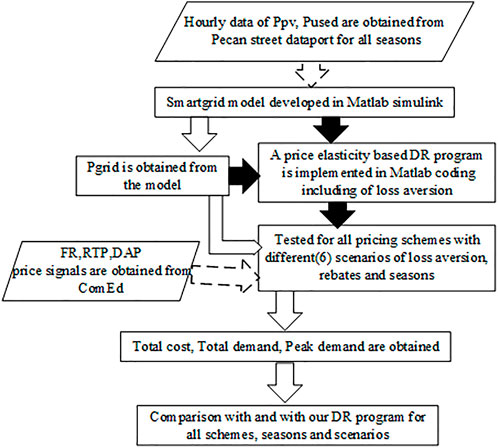
Report on Energy Star Program and Its Role in Sustainable Development Goals (SDGs)
Introduction
In Twinsburg, Ohio, consumers like Judy Sautner prioritize affordable and functional appliances, often seeking those with the Energy Star certification. This U.S.-based program, launched in 1992, has played a critical role in promoting energy efficiency, contributing significantly to environmental sustainability and economic savings.
Energy Star Program Overview
Energy Star is a voluntary labeling initiative managed by the Environmental Protection Agency (EPA). It sets energy efficiency standards for appliances, encouraging manufacturers to produce products that meet or exceed these benchmarks. Products that qualify bear the Energy Star label, indicating they consume less energy while maintaining performance.
Impact on Sustainable Development Goals
- SDG 7: Affordable and Clean Energy – Energy Star promotes the use of energy-efficient appliances, reducing overall energy consumption.
- SDG 12: Responsible Consumption and Production – By encouraging manufacturers and consumers to choose efficient products, the program supports sustainable consumption patterns.
- SDG 13: Climate Action – Since its inception, Energy Star has helped prevent 4 billion metric tons of greenhouse gas emissions, mitigating climate change impacts.
- SDG 11: Sustainable Cities and Communities – The program supports local and state utility rebate initiatives, fostering sustainable urban living.
How Energy Star Works
- The EPA establishes energy efficiency criteria for various appliances.
- Manufacturers design products to meet or exceed these standards.
- Qualifying products receive the Energy Star label, signaling energy savings and performance quality.
- Consumers benefit from lower utility bills and may access rebates and tax incentives.
Approximately 90% of U.S. households recognize the Energy Star symbol, highlighting its effectiveness in guiding consumer choices.
Potential Challenges if Energy Star Is Discontinued
The EPA’s proposed reorganization could eliminate Energy Star offices, complicating consumer access to reliable energy efficiency information. This change poses risks to the achievement of SDGs related to energy and climate.
- Consumers would need to independently analyze complex product specifications to identify energy-efficient appliances.
- Retailers like Jay Buchanan would bear increased responsibility to guide customers in selecting efficient products.
- Utility rebate programs would need to develop new qualification criteria without the Energy Star framework.
- There is concern that the added complexity could reduce consumer prioritization of energy efficiency, undermining climate action efforts.
Recommendations for Consumers and Stakeholders
- Engage with Utility Providers: Contact local utilities to learn about qualifying appliances and available incentives.
- Utilize Independent Resources: Refer to organizations such as Consumer Reports for appliance performance and efficiency data.
- Consult Industry Standards: Consider standards from the Consortium for Energy Efficiency as alternative benchmarks.
- Practice Energy-Efficient Usage: Use appliances wisely, such as washing clothes in cold water and selecting appropriately sized products.
Conclusion
The Energy Star program has been instrumental in advancing multiple Sustainable Development Goals by promoting energy efficiency and reducing greenhouse gas emissions. Its potential discontinuation presents challenges that require proactive measures by consumers, retailers, utilities, and policymakers to sustain progress toward affordable clean energy, responsible consumption, and climate action.
Consumers retain agency in energy conservation through informed product choices and efficient usage practices, reinforcing the ongoing commitment to sustainability regardless of program changes.
1. Sustainable Development Goals (SDGs) Addressed or Connected
- SDG 7: Affordable and Clean Energy
- The article discusses Energy Star, a program promoting energy-efficient appliances, which directly relates to ensuring access to affordable, reliable, sustainable, and modern energy.
- SDG 12: Responsible Consumption and Production
- The focus on energy-efficient appliances and consumer choices to reduce energy consumption aligns with promoting sustainable consumption and production patterns.
- SDG 13: Climate Action
- Energy Star appliances have prevented 4 billion metric tons of greenhouse gas emissions, contributing to combating climate change and its impacts.
2. Specific Targets Under Those SDGs Identified
- SDG 7 Targets
- Target 7.3: By 2030, double the global rate of improvement in energy efficiency.
- The Energy Star program’s standards and incentives encourage manufacturers and consumers to improve energy efficiency of appliances.
- SDG 12 Targets
- Target 12.2: By 2030, achieve the sustainable management and efficient use of natural resources.
- The article’s emphasis on energy-efficient appliances supports efficient use of energy resources.
- SDG 13 Targets
- Target 13.1: Strengthen resilience and adaptive capacity to climate-related hazards and natural disasters.
- Reducing greenhouse gas emissions through energy-efficient appliances contributes to climate mitigation efforts.
3. Indicators Mentioned or Implied to Measure Progress
- Energy Savings per Household
- The article states Energy Star appliances save households an average of $450 annually on energy bills, which implies measurement of energy cost savings as an indicator.
- Greenhouse Gas Emissions Reduction
- Prevention of 4 billion metric tons of greenhouse gas emissions is a direct indicator of environmental impact reduction.
- Household Recognition Rate of Energy Star Label
- Approximately 90% of households recognize the Energy Star symbol, indicating awareness and potential adoption rates.
- Energy Efficiency Specifications
- Indicators such as energy consumed when off, presence of low-power modes, and minimum efficiency ratings are used to qualify appliances.
4. Table: SDGs, Targets and Indicators
| SDGs | Targets | Indicators |
|---|---|---|
| SDG 7: Affordable and Clean Energy | Target 7.3: Double the global rate of improvement in energy efficiency by 2030. |
|
| SDG 12: Responsible Consumption and Production | Target 12.2: Achieve sustainable management and efficient use of natural resources by 2030. |
|
| SDG 13: Climate Action | Target 13.1: Strengthen resilience and adaptive capacity to climate-related hazards. |
|
Source: apnews.com







